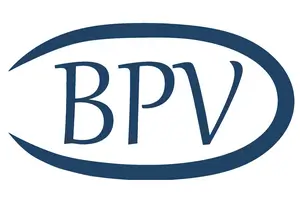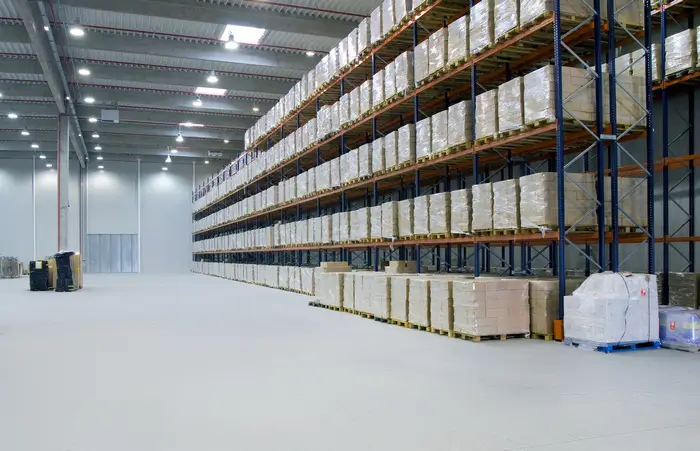In the life science industry, maintaining precise temperature control is paramount when storing temperature-sensitive items. Vaccines, medications, and biological samples often have specific temperature requirements to ensure they retain their efficacy and safety. Here at BPV, our thermal mapping engineers are on the front lines of this critical task to ensure compliance with GMP and GxP regulations. We recently sat down with two of our thermal mapping engineers to get to the crux of what they do in providing value every day for our clients. During this interview, we learned about their daily routines, the key factors contributing to successful thermal validation in life science facilities, and the recommendations they provide to clients to optimise temperature control.
Question 1: What does your typical day look like as a Validation Engineer at BPV?
No two days are the same, and that is what I love most about this job. We deal with different types of equipment every single day. The same equipment is being qualified every year or every 3 years and a thermal validation study lasts for 24 hours or longer, so no days are the same. Each day can vary depending on the stage of the validation cycle of the equipment we are working on. Our activities include:
- Generating and reviewing protocols.
- Preparing the materials for thermal validation.
- Assessing the usage of the equipment and requirements of the items being stored.
- Setting up temperature sensors within the chamber/area of the equipment to be validated.
- Test Execution.
- Data collection and analysis to assess the equipment performance.
- Troubleshooting any potential issues that may arise during the validation process.
- Documenting all validation activities and results in reports for internal and regulatory review.
- Communicating findings to all the involved parties and even making recommendations for continuous improvement.
We also attend periodic meetings to ensure project goals and timelines are aligned. Moreover, it is also important to stay up to date with industry standards and regulatory changes to ensure our validation strategies remain compliant and effective.
Question 2: In your opinion, what are the most critical factors that contribute to the success of a thermal mapping project?
Many critical factors contribute to a successful study, as listed below:
- Accurate Planning: Defining the scope and objectives clearly, including the areas to be mapped (usable space – non-usable space) and the conditions to be tested.
- Sensor Calibration: Ensuring that all sensors and data loggers are appropriately calibrated and functioning correctly to gather accurate data.
- Appropriate Sensor Placement: Strategic placement of sensors to capture a comprehensive representation of temperature distribution within the area being mapped.
- Environmental Control: Maintaining consistent test conditions to ensure the mapping results are valid and replicable.
- Data Analysis: Competent interpretation of the collected data to identify hot and cold spots and assess whether the environment meets the required specifications.
- Report Documentation: Detailed documentation of the methodology, findings, and any corrective actions taken, which is essential for compliance and future reference.
- Compliance with Standards: Adherence to relevant guidelines and standards (such as ISO, WHO, etc.) that provide guidance on the requirements and protocols for thermal mapping.
- Expertise: Having knowledgeable personnel who understand the principles of thermal dynamics and can effectively execute the thermal mapping study is also crucial for ensuring success.
- Follow-up and Validation: After making adjustments based on the initial mapping, it is important to re-validate to ensure that the changes have produced the desired effect.
- Continuous Monitoring: Implementing a system for continuous temperature monitoring to maintain the validated state over time.
Question 3: What common recommendations do you make to clients for improving temperature uniformity and stability based on thermal mapping findings?
In my experience as a thermal validation engineer, based on the information we get from the data we collect following a thermal qualification study, we often recommend temperature set-point re-alignment to ensure a safe operating margin is maintained within the required temperature range and mitigate potential risks of failure and advise on proper loading practices to avoid creating hot or cold spots within the usable space. We also suggest developing or optimising preventive maintenance schedules to ensure that all the components of equipment are functioning correctly. There are cases when the equipment is outdated or incapable of maintaining the required temperature conditions, for which we suggest considering replacement or upgrades. Continuous monitoring is vital within controlled temperature units therefore, we may recommend clients repositioning existing temperature sensors or installing additional ones for to ensure the worst case locations are monitored. When it comes to warehouses, we may recommend repositioning fans or vents to adjust the airflow patterns for a uniform temperature distribution. We may also suggest insulation improvements to minimise thermal losses. We can advise on various topics depending on the specific equipment and situation, but these steps are crucial for maintaining temperature uniformity and meeting regulatory standards.
Question 4: What do you think are the aspects people commonly get wrong with thermal validation?
Thermal validation is a critical process in industries where maintaining specific temperature conditions is essential for quality and regulatory compliance. It involves the use of sensors and data loggers to verify that equipment such as ovens, refrigerators, incubators, cold rooms, warehouses etc consistently achieve and maintain the required temperature profiles. However, mistakes during this process can lead to inadequate validation, resulting in product quality issues or non-compliance with regulations.
The common mistakes seen are:
- Improper Sensor Placement: Not placing sensors in critical areas.
- Inadequate Number of Sensors: Using too few sensors, missing temperature variations.
- Not Accounting for All Variables: Overlooking factors like load and environment.
- Inconsistent Data Logging: Failing to log data at consistent intervals.
- Failure to Follow Protocols: Deviating from established protocols.
- Insufficient Documentation: The validation process is not thoroughly documented.
In conclusion, avoiding common mistakes and following best practices in thermal validation ensures product quality and regulatory compliance. Regular training, revalidation, and the use of quality equipment are essential for a successful validation process.
Question 5: How do you manage communication between yourself and key stakeholders on site?
As service providers for pharmaceutical companies, effective communication with stakeholders is essential. There are weekly meetings within the Validation departments in which we actively participate, and we keep the site Validation representatives in the loop with regard to the status of our work. In case there are issues regarding certain controlled temperature units that we are in the process of qualifying, there will be meetings with all the involved parties to discuss further steps and plan of action. Normally, we use written communication, mainly e-mails, to document discussions and decisions, ensuring all involved parties have access to the latest information. We also encourage feedback, and we are responsive to their concerns. This builds trust and promotes a positive working relationship. We often use graphs and other visual aids to deliver information clearly. Communication is tailored to our audience’s needs, providing detailed information to some while offering high-level summaries to others. After interactions, we ensure that we follow up with concise summaries and reports containing what was agreed upon or summarising our thermal mapping findings.
Question 6: What documentation and reporting are typically provided to clients after a thermal mapping study?
- Summary Report: a high-level report which details the outcome of the study, and highlights any deviations and corrective actions that were implemented.
- Final Report: A comprehensive document that includes the study’s objectives, methodology, results, and conclusions.
- Protocol Document: Outlines the study design, including the rationale for sensor placement, duration, and acceptance criteria.
- Raw Data Files: The actual temperature and/or humidity data logged during the study and any equipment-specific supporting documents.
- Data Analysis: Summary of the data with statistical analysis, highlighting any out-of-specification conditions.
- Graphical Data Representation: Charts, graphs, and thermal mapping images illustrating the temperature distribution.
- Calibration Certificates: For the data loggers, thermocouples and BMS monitoring sensors used, to verify accuracy.
- Deviations and Discrepancies: Documentation of any deviations/discrepancies from the protocol and the actions taken to address them.
- Conclusion and Recommendations: Final assessment and suggestions for improving temperature control or study methods.
- Appendix/attachments: This may include equipment lists, calibration records, SOPs, and other relevant documents supporting the study.
BPV Ltd is a trusted provider of temperature mapping services to the Life Science industry. If you need assistance in making sure your storage areas are fully compliant or have any questions, please contact us here.

